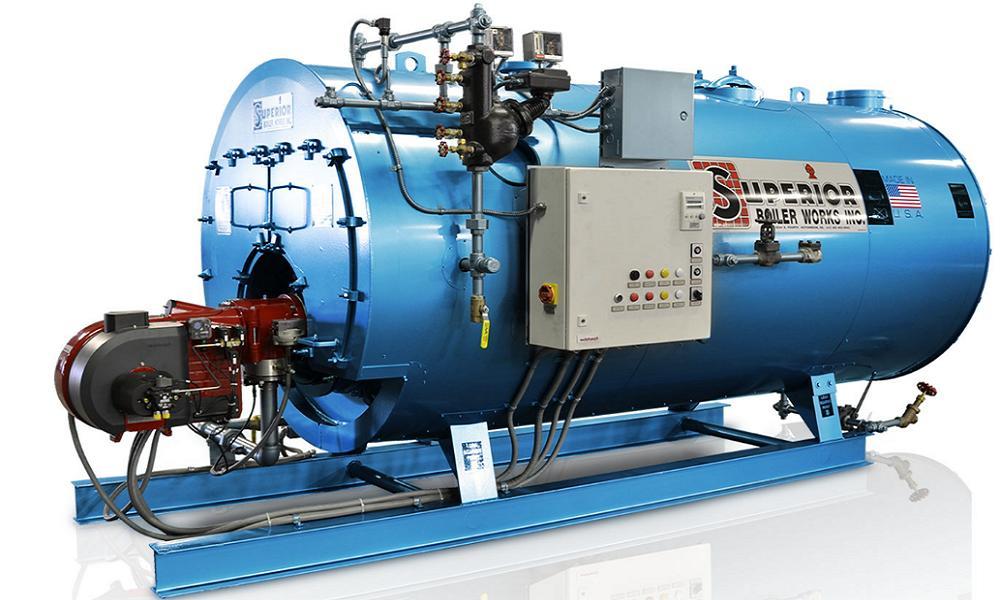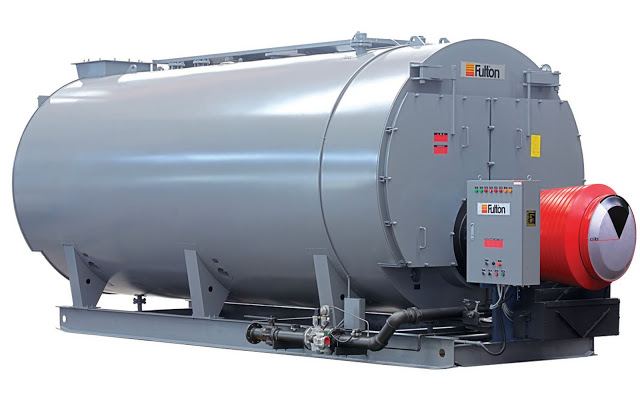Knowing different parts of boilers will ease your way toward understanding boiler design and boiler components diagram. You’ll also have an easier time learning how they work. So, in this article from Linquip, we will talk about different parts of boilers and explain their function in a boiler system with an easy-to-understand approach.
A commercial boiler is a pressurized system that heats water by burning combustible fuel. Some boilers utilize steam to deliver hot water, while others use water that has been converted to steam. The hot water or steam is transferred through pipes to radiators or other types of heaters throughout your commercial property, keeping personnel, clients, or customers warm and pleasant. Different parts of the boiler are available from a wide range of Suppliers and Companies, as well as manufacturers and distributors, and Linquip has a large selection of Parts of Boiler for Sale.
Linquip’s website has a comprehensive list of parts of boiler services for all OEM fleets. Vendors from Linquip can help you with this. To learn more about how to connect with a varied collection of service providers who consistently produce high-quality products, please contact Boiler Experts.
⇒ View a List of Boiler for Sale and Their Suppliers ⇐
The boiler definition
Boilers are systems used to heat a fluid (usually water) in a closed vessel. It can be boiled, heated, or vaporized. You can then use the outcome for various purposes or heating applications such as cooking, water heating, sanitation, central heating, boiler-based power generation, etc.
Boilers function with the heat-emitting system, control system, and distribution system to achieve the desired outcome. Plus, different parts of boilers are among the main components of boiler in thermal power plants.
Main parts of boilers
There are different parts that make up a boiler and though they’ve been around for a while now and modern boilers are more energy-efficient than the older ones, some of these parts are still the same. Learning different parts help you in repairing and the maintenance of your boiler. But what are these main parts?
-
Combustion chamber or firebox
The burner creates combustion in this chamber that heats the heat exchanger up to several hundred degrees. The fuel that is burned in this chamber varies. Kerosene, heating oil, and liquid propane are the most common fuel sources used in the combustion chamber of the boilers. The firebox or the combustion chamber is usually made of cast iron to withstand the heat and the pressure of the process inside. The process increases the temperature inside the chamber up to several hundred degrees in a really short time so the used materials should be suitable for such a condition.
-
Heat exchanger
The combustion created in the firebox, creates a heat that’s transferred by the heat exchanger to heat the fluid up in the tank. This heat exchanger carries the produced heat to the fluid without any direct contact with the water.
See All Heat Exchanger for Sale
-
Expansion tank
Another item in the list of different parts of boilers is expansion tank; this small tank is responsible for protecting the boiler from excessive pressure and ensures its safety along the process.
-
Burner
One of the most important parts of boiler is the burner which is where the mixing of the air with the fuel source happens, resulting in the combustion which provides the necessary heat to heat up the fluid. They are responsible for initiating the combustion reaction in the system with the electronic signal of the thermostats to the burner. This signal informs the system when there’s a need to produce heat. The burner uses the fuel pumped from an outside source with a filter mechanism. There’s a nozzle designed on the burner to turn this fuel into the spray and ignites it initiate the combustion inside the firebox.
-
Aquastats
Aquastats are the components in the boiler responsible to send the right signal to the burner about when to stop or when to start the process. They know the right time based on the temperature of the fluid in the boiler.
-
Backflow valve
Backflow valve acts as a safety unit, allowing the flow of the fluid only in a single direction.
-
Supply lines
These parts of boiler are pipes that are responsible for delivering the heated stream of fluid to the distribution points in the boiler.
-
Return lines
Return lines are responsible for bringing the cooled fluid or the cooled steam (which changes its state back to its liquid form) back to the boiler to heat it up again.
-
Circulator pump
The last item on the list of different parts of boiler we want to introduce to you is the circulator pump. This part directs the hot water throughout the boiler to help it circulate to the different outlets in our homes, offices, or other places that the boiler is used. They are used in the boilers that use hot water for heating purposes.
Boiler parts maintenance
Keep in mind that in order to get the most out of your boiler, you need to take care of each and every part of the system and make sure they are as efficient and as healthy as possible. For that purpose, you need to set an appointment for regular maintenance check (usually annual) and also clean the boiler to maximize its efficiency. You should remove debris and residue from the firebox as well.
Keep each and every part under control and ask an expert to examine these parts for any damage and to repair the broken ones as soon as possible to avoid bigger damages in the future. Avoid any attempts at repairing the boiler yourself if you are not an expert because the maintenance of these systems should be done by licensed technicians. Since they work with energy, heat, and combustion process, each part must be properly maintained and installed; so, leave this delicate job to the experts to ensure your safety and the system’s safety.
There are other parts designed in the boilers that help the process along the way, but the ones mentioned above are the most important ones that are used in different types of boilers available on the market. So the basics are the same and if you are confused about the boiler you want to buy, you need to check out those extra parts and also the specific application you expect from the boiler to choose the right type for your place without any difficulties.
Now that you know all there is to know about different parts of boilers, are you ready to learn see how boilers work? And if you have any comments about this article or boilers in general, write for us in the comment section and share your opinion with everyone. Have any problems or questions about boilers? Feel free to join Linquip and our experts will help you solve your problems in a flash!
What Is the Most Important Part of a Boiler?
There are safety valves. In a boiler or household hot-water system, the safety valve is the most crucial safety device. Its purpose is to release internal pressure in the event of a variety of system faults.
Safety valves are commonly used in steam systems for boiler overpressure protection as well as other applications such as downstream pressure-lowering devices. Safety valves are employed in process operations to avoid product damage owing to high pressure, despite their primary function of safety.
Download Parts of Boiler PDF
Buy Equipment or Ask for a Service
By using Linquip RFQ Service, you can expect to receive quotations from various suppliers across multiple industries and regions.
Click Here to Request a Quotation From Suppliers and Service Providers
Read More on Linquip
- The 9 Best Combi Boilers of 2021
- How Steam Boiler System Works?
- 5 Best Steam Boilers Worth Buying
- The 5 Best Regular Boilers of 2021
- Types of boilers: Which one is the best?
- Water Tube Boiler: What You Need to Know
- How Much Does a New Combi Boiler Cost? A Clear Guide
- Types of Heat Exchangers: An Introduction to All Essential about Specifications
- 5 Best Electric Boilers: A Practical Guide
- Boiler Efficiency: Definition, Formula Caculation
- What Are Air Source Heat Pumps? A Complete Guide
- Benson Boiler: A Full Discussion on Structure, Working Principle, Pros and Cons and Applications
- Cochran Boiler : All You Need to Know about Parts, Working Principle, and Features
- Package Boiler: Your go-to guide to learn everything about them
- 16 Parts of Heat Pump and Functions (Clear Guide)
- 3 Types of Heat Pump + Working Principle ( Clear Guide)






So easy to understand
Your document is extremely important
We are so grateful for your kind words. Thanks for sharing your review with us and the community. Please sign up on Linquip with any further comments or suggestions you wish to share. Again, thank you for taking the time to review our article!
Fine
Very simple and straightforward.
Your kind words are much appreciated, Emmanuel! It was a pleasure having you visit us.
I want to lean this work
Your kind words are much appreciated! It was a pleasure having you visit us.
The above work is is very efficient and Paramount.
I wish to learn it
Thanks for visiting our website and leaving your comment, Okita! You are encouraged to visit Linquip Tech News, where you can find similar posts.